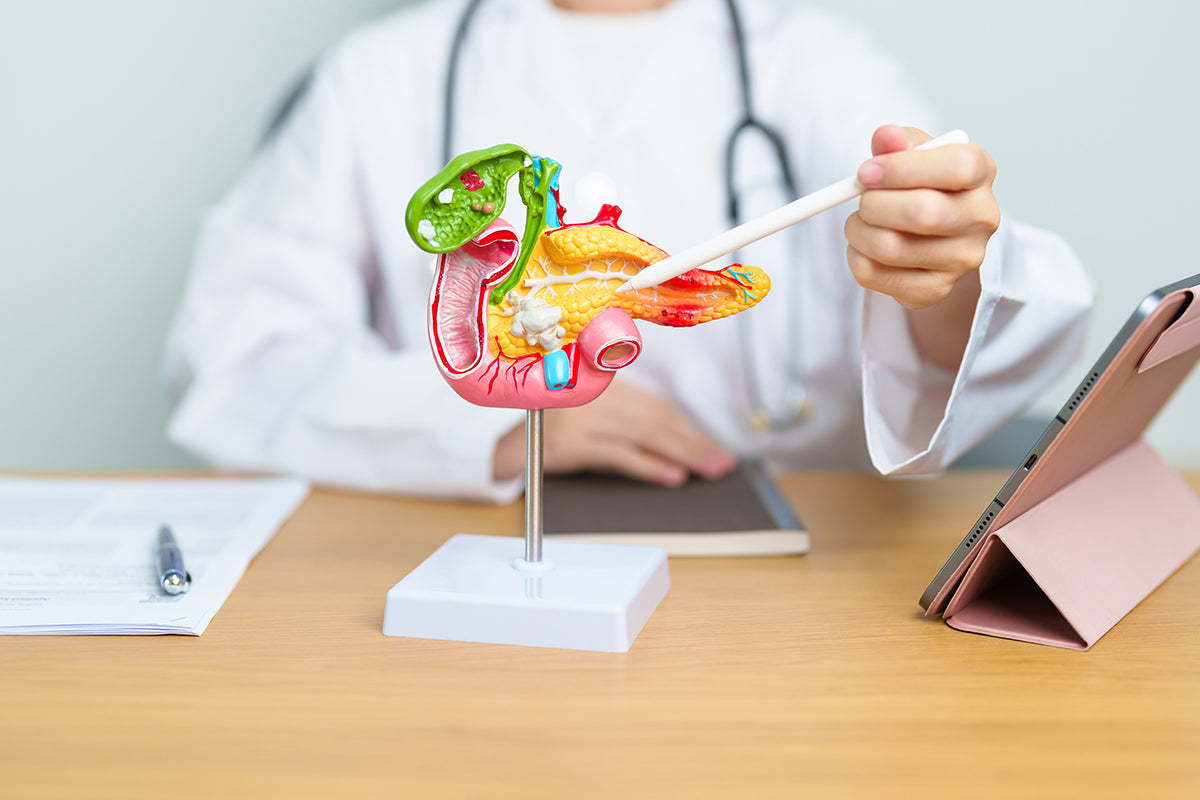
Gallbladder cancer: when gallbladder grows out of control
|
|
Time to read 3 min
|
|
Time to read 3 min
Gallbladder cancer is a type of cancer that starts in the gallbladder (a small, pear-shaped organ located on the right side of the human abdomen, beneath the liver).
The gallbladder is part of the biliary system and serves as a reservoir for bile, a substance produced in the liver that is essential for emulsifying fats in the digestive tract. When fats are detected in the duodenum, the gallbladder receives a molecular signal to contract rhythmically, releasing its contents into the common bile duct, which ultimately drains into the duodenum. This process is crucial for the proper absorption of fats and for the elimination of bilirubin, a byproduct of hemoglobin metabolism, via bile salts.
Gallbladder cancer is not very common. Most diagnosed cases are adenocarcinomas, which develop in gland-like cells, though other types of cancer may also occur.
Doctors categorize gallbladder cancer into two main groups:
Several factors can increase the risk of developing gallbladder cancer. Some risk factors can be managed with a healthier lifestyle, while others, such as family history, are beyond control:
Most cases of gallbladder cancer do not cause symptoms until the disease has spread too far to be cured. However, early-stage gallbladder cancer may present the following symptoms:
As with many other cancers, the outcome depends on how advanced the cancer is at the time of diagnosis. Unfortunately, gallbladder cancer generally has a poor prognosis. For individuals with cancer confined to the lining of the gallbladder, 80% survive for five years or more after diagnosis. However, if the cancer has spread to the muscle layer (stage I), only 50 out of 100 people survive five years or more. Due to the difficulty in detecting this cancer, just over 25 out of 100 people diagnosed survive five years or more. Fewer than 10 out of 100 people with stage III or IV gallbladder cancer survive five years or more.
IMPORTANT: EARLY DETECTION OF CANCER IS CRUCIAL. CANCER DIAGNOSED AT AN EARLY STAGE —BEFORE IT HAS GROWN SIGNIFICANTLY OR SPREAD TO OTHER AREAS OF THE BODY— HAS A MUCH HIGHER CHANCE OF BEING SUCCESSFULLY TREATED. CONVERSELY, IF THE CANCER HAS SPREAD TO OTHER ORGANS, TREATMENT BECOMES MORE DIFFICULT, AND SURVIVAL RATES ARE MUCH LOWER.
Historically, various screening systems have been used to detect this type of cancer, including blood tests designed to assess liver function and imaging techniques. However, these systems have inherent limitations. The gallbladder is located deep within the body, making cancers difficult to visualize.
The reliability of blood tests for detecting this cancer is insufficient, and they should not be relied upon.
In conclusion, gallbladder cancer cannot currently be adequately detected in its early stages due to the limitations described above. It is typically discovered only after the cancer has grown enough to cause signs or symptoms.
Gallbladder cancer starts in the gallbladder (a small, pear-shaped organ located on the right side of the human abdomen, beneath the liver).
Gallbladder cancer is not very common. Most diagnosed cases are adenocarcinomas, which develop in gland-like cells, though other types of cancer may also occur.
The presence of gallstones, obesity, age and the presence of biliary polyps are some of the risk factors for gallbladder cancer.
Symptoms of gallbladder cancer usually include fever, abdominal pain, nausea, and jaundice, among others.